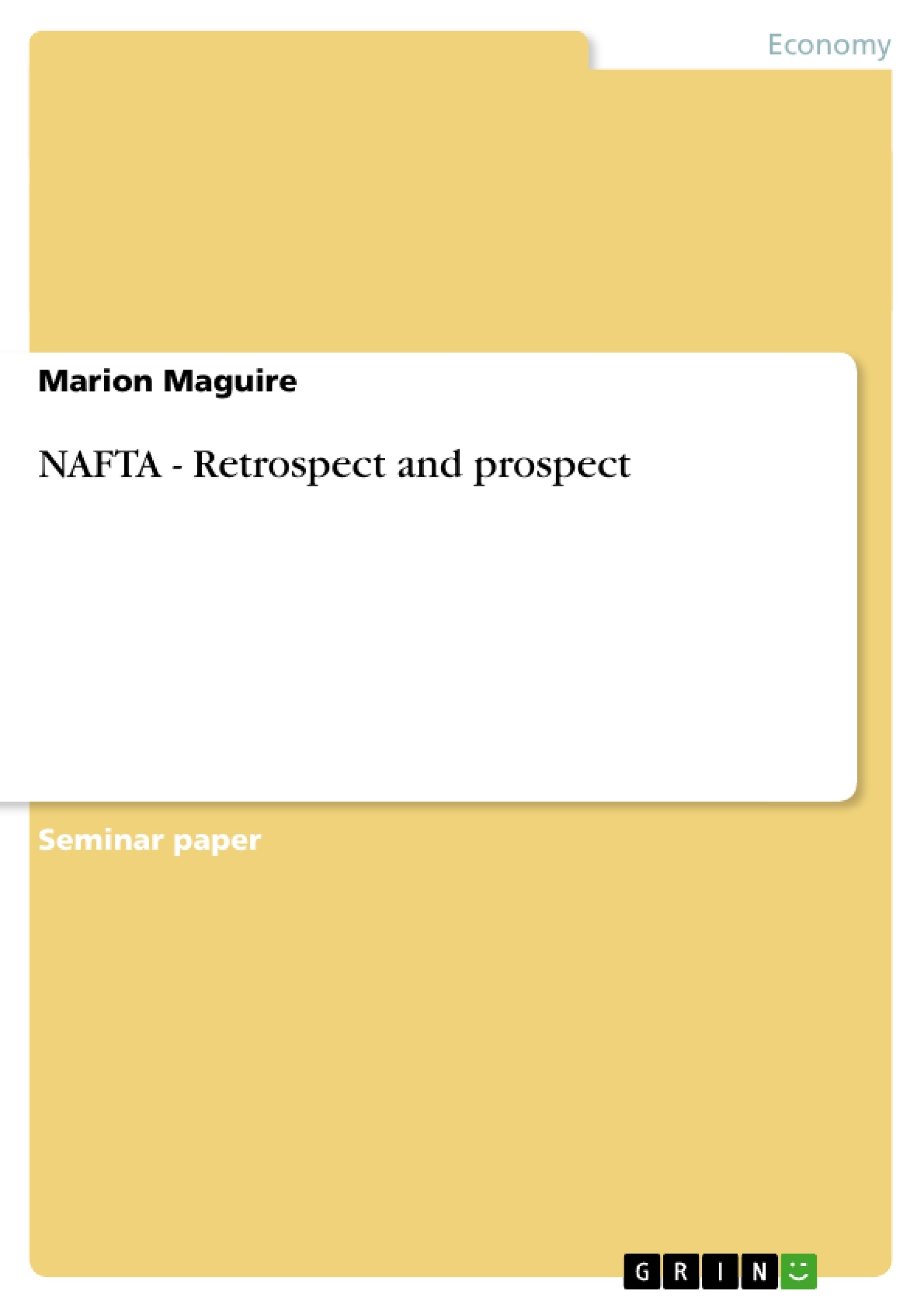To comprehend what is driving U.S. trade and investment policy requires an understanding of simultaneous developments occurring in investment, production, and trade. World exports grew more during the past decade than world production, indicating increased international interdependence. The growth in trade was made possible by improvements in transportation and communication networks, but also by the steady reduction of trade barriers.
On January 1, 1994, the North American Free Trade Agreement (NAFTA) came into effect among Canada, Mexico, and the United States. The agreement provides a detailed framework for the conduct of trade among the three countries. But its objectives are much more expansive than trade alone: The agreement is designed to remove barriers to investment among the three countries, permit the free flow of services, and enable expeditious settlement of trade disputes. NAFTA is an economic agreement that should influence where and how goods are produced and how services are provided in North America. NAFTA should have a positive effect on income and employment in each of the three member countries. These effects should be greatest in Mexico, the least developed of the three.
TABLE OF CONTENTS
I. INTRODUCTION
Purpose and Importance of the study
Statement of the problem
Limitations
II. THEORETICAL OR PRACTICAL FOUNDATION
Introduction
Theoretical or practical basis
III. RESOLUTION PROCESS
Introduction
Data
Location of the data
IV. ANALYSIS
Introduction
Retrospect
Prospect
V. CONCLUSION AND RECOMMENDATION
VI. REFERENCES
I. INTRODUCTION
Purpose and Importance of the study
World exports grew more during the past decade than world production, indicating increased international interdependence. The growth in trade was made possible by improvements in transportation and communication networks, but also by the steady reduction of trade barriers. International trade can be fruitful in different ways. The most obvious reason for international trade is availability of resources. Nations have an acquired advantage of being able to produce certain products at lower costs because of certain skills, education, technologies, and infrastructure. Therefore, trading countries can gain from international trade.
Statement of the problem
International trade creates both, winners and losers. Some industries gain access to lucrative markets, but others fail to survive increased competition in their home markets. Consumers and producers may be able to buy goods and raw material more cheaply, but in contrast, producers often feel the effects of trade barriers and agreements more acutely. Following study will analyze the fruitfulness of the trade agreement NAFTA.
Limitations
This Case Study only describes basics about the trade agreement NAFTA. The limited size of the paper doesn’t allow describing neither all the details of the agreement nor all the impacts of it for the three member countries.
II. Theoretical or Practical Foundation
Introduction
On January 1, 1994, the North American Free Trade Agreement (NAFTA) came into effect among Canada, Mexico, and the United States. The agreement provides a detailed framework for the conduct of trade among the three countries. But its objectives are much more expansive than trade alone: The agreement is designed to remove barriers to investment among the three countries, permit the free flow of services, and enable expeditious settlement of trade disputes. NAFTA is an economic agreement that should influence where and how goods are produced and how services are provided in North America. NAFTA should have a positive effect on income and employment in each of the three member countries and these effects should be greatest in Mexico, the least developed of the three.
Theoretical or practical basis
There are two ways of approaching international free trade: Bottom up and top down approaches. The bottom up approach describes international economic integration as a form of economic cooperation among a limited number of independent nations of a particular region.
illustration not visible in this excerpt
Four different forms of economic cooperation exist: Free trade areas, custom unions, common markets and economic unions. The bottom up approach takes a more local outlook. Forms of this approach are for example free trade associations, like the North American Free Trade Association (NAFTA). In free trade associations no duty is levied on imports from other member states, but each member may charge different rates of duty on its imports from the rest of the world. Regarding NAFTA, a Free Trade Area was established first to eliminate tariff restrictions between two countries, Canada and the United States. Secondly, a Customs Union was established, which expanded that arrangement by extending it to a third partner, Mexico.
[...]
- Citar trabajo
- Marion Maguire (Autor), 2003, NAFTA - Retrospect and prospect, Múnich, GRIN Verlag, https://www.grin.com/document/20214
-

-

-

-
¡Carge sus propios textos! Gane dinero y un iPhone X. -

-
¡Carge sus propios textos! Gane dinero y un iPhone X. -

-
¡Carge sus propios textos! Gane dinero y un iPhone X. -

-
¡Carge sus propios textos! Gane dinero y un iPhone X. -

-
¡Carge sus propios textos! Gane dinero y un iPhone X.

